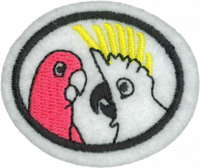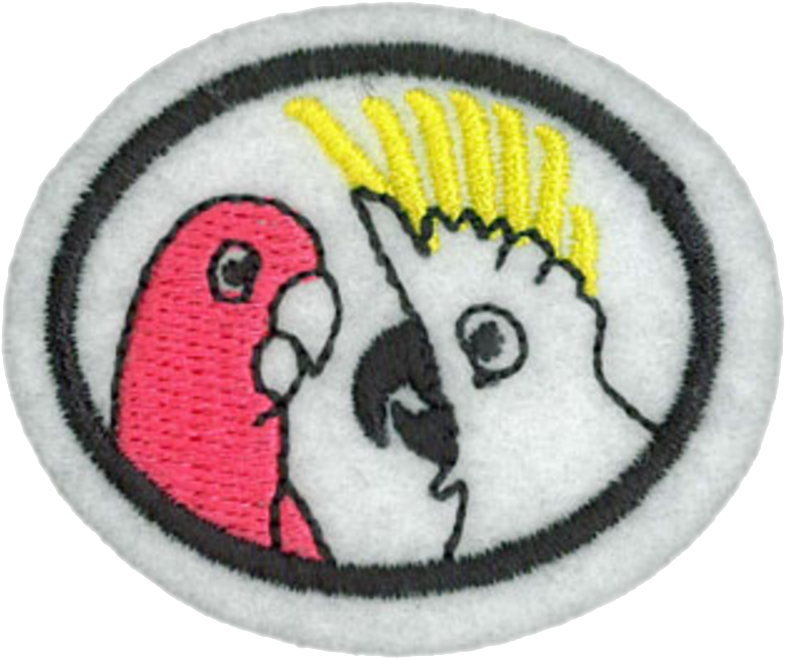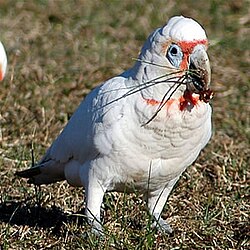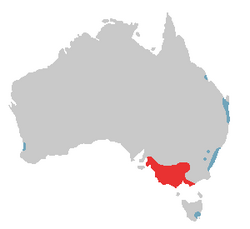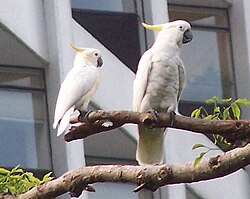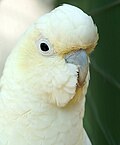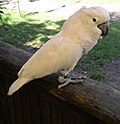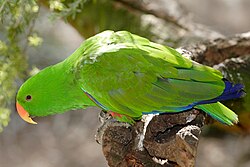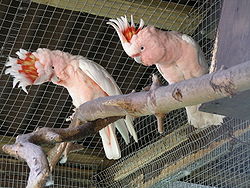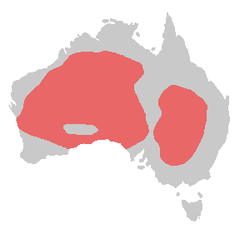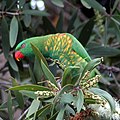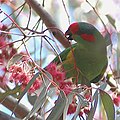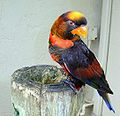Especialidades JA/Loros y cacatúas/Respuestas
Nivel de destreza
2
Año
2001
Version
05.12.2025
Autoridad de aprobación
Asociación General
1
2
Grey-cheeked Parakeet
The Grey-cheeked parakeet (Brotogeris pyrrhoptera), less commonly known as fire-winged parakeet, is a species of parrot in the Psittacidae family.
3
3a
The Long-billed Corella, Cacatua tenuirostris, is a cockatoo native to Australia. Species are mostly white, with a pink face and forehead. They also have faintly pink feathers on the breast and belly, and yellow on the underside of the wings and tail. The birds have a long white beak, which is used to dig for roots and seeds.
3b
3c
Gang-gang cockatoos eat fruits, and seem to have a particular weakness for Hawthorn berries (though Hawthorns are an introduced species, and not part of the cockatoo's natural diet).
4
- Yellow-crested Cockatoo
- The Yellow-crested Cockatoo, Cacatua sulphurea, is critically endangered. Numbers have declined dramatically due to illegal trapping for the cage-bird trade. The current population is estimated at less than 10,000. It is listed on Appendix I of CITES.
- Red-vented Cockatoo
- This bird, Cacatua haematuropygia, is critically endangered. Populations have decreased dramatically due to illegal trapping for the cage-bird trade. The high price fetched per bird (c.US$160 in Manila in 1997) means that chicks are taken from virtually every accessible nest. Loss of habitat may also have contributed to its decline. The current population is estimated at less than 4,000 birds.
- Moluccan Cockatoo
- The Moluccan Cockatoo, Cacatua moluccensis, is an endangered species, and has been listed on appendix I of CITES since 1989, which makes trade in wild-caught birds illegal. Trade in captive bred birds is legal only with appropriate CITES certification. Numbers have declined due to illegal trapping for the cage-bird trade and habitat loss. During the height of the trapping of this species over 6,000 birds were being removed from the wild per year. It has a stronghold in Manusela National Park on Seram, although even today some illegal trapping continues.
5
The Green Rosella or Tasmanian Rosella (Platycercus caledonicus) is endemic to Tasmania. The largest of the Rosellas it is predominantly green and yellow in plumage with blue cheeks.
Its diet consists mostly of seeds, fruits, and berries, and it will sometimes feed on the ground.
6
| State of Australia | Associated Rosella |
|---|---|
| New South Wales | Crimson Rosella |
| Queensland | Pale-headed Rosella |
| South Australia | Adelaide Rosella |
| Tasmania | Green Rosella |
| Victoria | Crimson Rosella |
| Western Australia | Western Rosella |
7
The Eclectus Parrot, Eclectus roratus, is a parrot native to the Solomon Islands, New Guinea, northeastern Australia and the Maluku Islands (Moluccas). It is unusual in the parrot family the males and females are so different from one another. The males of the species are bright green, having bright candy-corn-colored upper mandibles and black lower mandibles, and blue or red tail and wing feathers; while the females have red heads and blue to purple breasts, with black beaks. Joseph Forshaw, in his book Parrots of the World, noted that the first European ornithologists to see Eclectus Parrots thought they were of two distinct species.
The diet of the eclectus in the wild consists of mainly fruits, unripe nuts, flower and leaf buds, and some seeds. Two favorite fruits are the pomegranate and the papaya (pawpaw) with seeds. In captivity, they will eat most fruits including mangos, figs, guavas, bananas, any melons, stone fruits (peaches etc.), grapes, citrus fruits, pears and apples.
8
With its soft-textured white and salmon-pink plumage and large, bright red and yellow crest, Major Mitchell's Cockatoo is generally recognised as the most beautiful of all cockatoos. It is named in honour of Major Sir Thomas Mitchell, who wrote "Few birds more enliven the monotonous hues of the Australian forest than this beautiful species whose pink-coloured wings and flowing crest might have embellished the air of a more voluptuous region".
It is restricted to arid and semi-arid inland areas of Australia (see map).
9
Lories and lorikeets are small to medium-sized arboreal parrots which comprise the subfamily Loriinae. They are widely distributed throughout the Australasian region, including south-eastern Asia, Polynesia, Papua New Guinea and Australia, and the majority have very brightly colored plumage.
Lories and lorikeets have specialized brush-tipped tongues for feeding on nectar and soft fruits. They can feed from the flowers of about 5,000 species of plants and use their specialised tongues to take the nectar. The tip of their tongues have tufts of papillae (extremely fine hairs), which collect nectar and pollen.
10
Here are a couple examples.
The Musk Lorikeet breeds mainly from August to January. Their nest are usually built in a hollow limb of a tree. Two white 25 mm × 20 mm (0.98 in × 0.79 in) eggs are laid.
Golden-shouldered Parrot lives in open forest. An important habitat requirement is the provision of terrestrial termite mounds, which the bird uses for nesting. This has led to the parrot also being known as the Antbed Parrot. They will preferentially seek out taller mounds (up to 2 m high), and will dig a burrow into them when the mound has been softened by the rains. A long tunnel is dug down into the mound, and capped off by a nesting chamber. The mound regulates the temperature in the chamber, keeping it high enough that the eggs can be left unattended while the parents feed. A borrow and nesting chamber are dug from a termite mound, normally by the female, between March and June. Mounds are usually only sufficiently large enough for nesting when they are 30 to 50+ years old, and are rarely occupied more than once, possibly due to the persistence of nest parasites, such as lice, or because mounds repaired by termites are difficult to excavate. Thus there are problems in some areas where most mounds of a suitable size have already been used The clutch size is between 3-6 eggs which are white and almost spherical and incubated for 20 days.
11
If there are no parrots and cockatoos in your area, make a list for an area where they do live.
